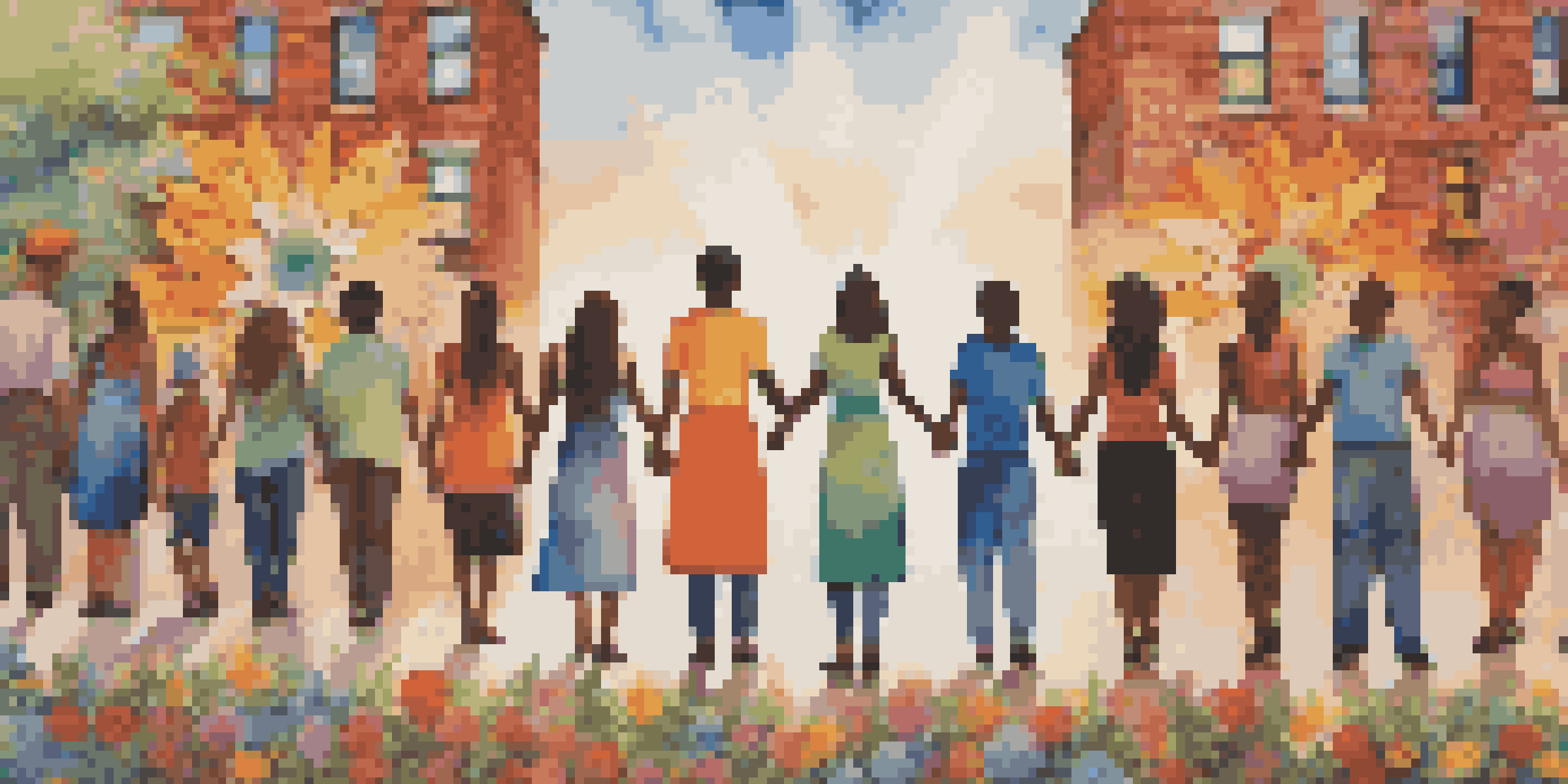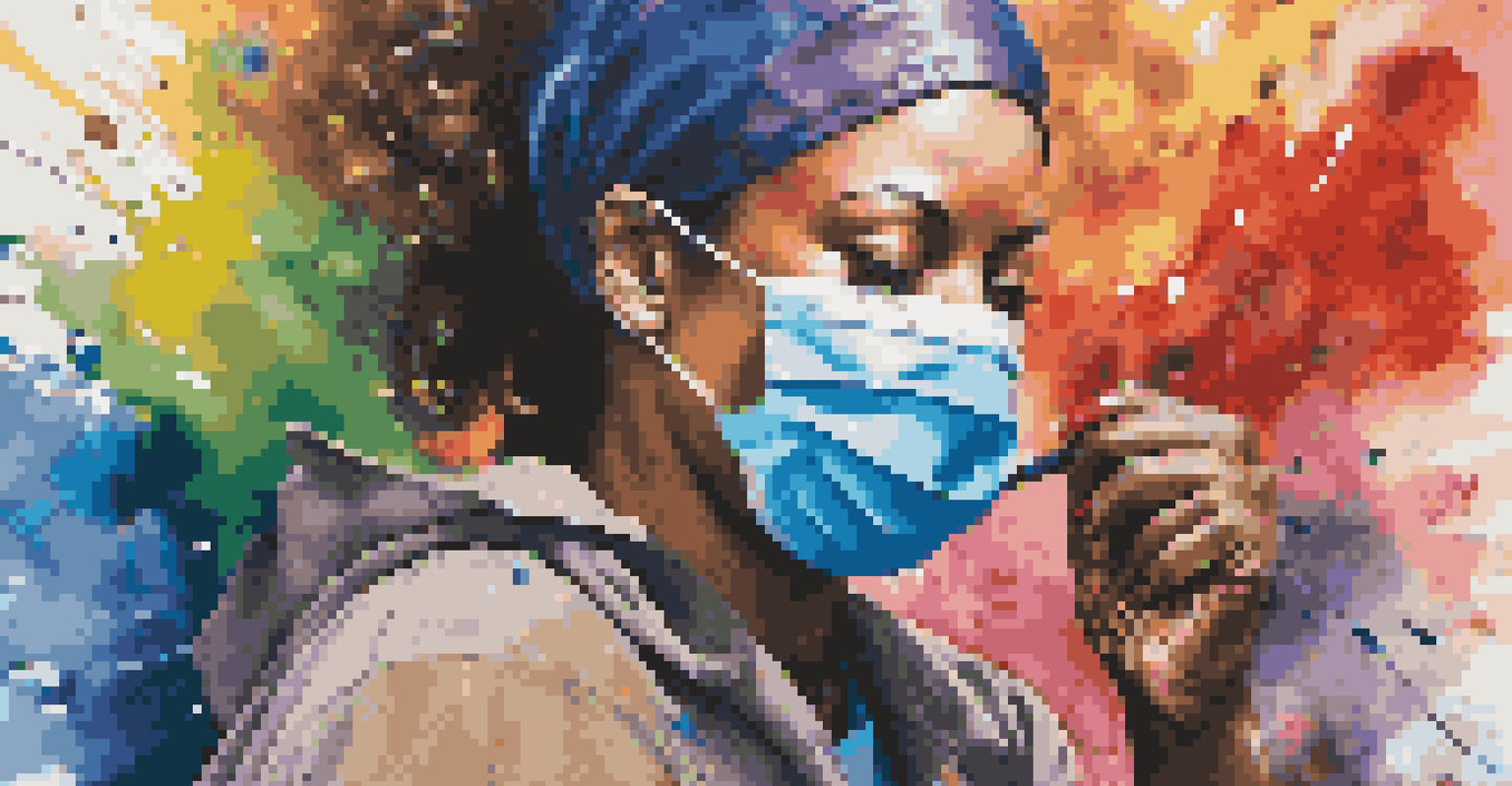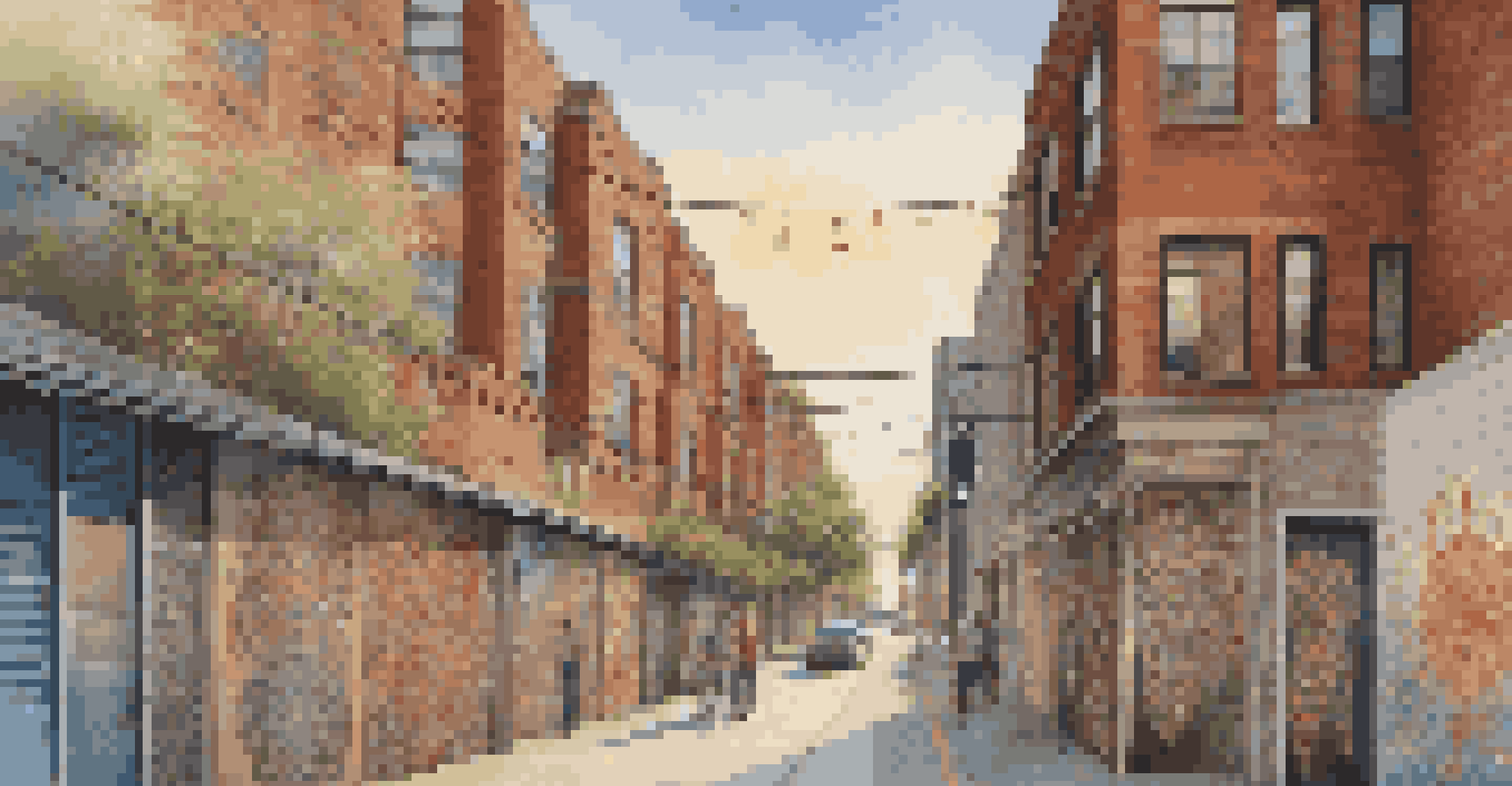Street Art During Crisis: Expressions of Hope and Resilience

The Role of Street Art in Urban Landscapes
Street art has become a vibrant part of urban culture, often reflecting the emotions and experiences of the communities it inhabits. Unlike traditional art forms that may reside in galleries, street art bursts forth in public spaces, making it accessible to everyone. This accessibility allows artists to engage directly with the public, giving voice to collective sentiments, especially during times of crisis.
Art is a collaboration between God and the artist, and the less the artist does the better.
For instance, in cities facing social unrest or economic downturns, murals and graffiti can express the frustrations and hopes of residents. They often serve as a unifying force in communities, fostering a sense of belonging and shared identity. When people see their struggles depicted on walls, it can validate their experiences and inspire action.
Moreover, street art has the power to transform neglected areas into vibrant hubs of creativity. By beautifying urban spaces, it can uplift spirits and encourage community involvement, reminding us that even in tough times, there is beauty and hope to be found.
Art as a Response to Crisis: Historical Context
Throughout history, art has often emerged as a response to societal challenges. For example, during the Great Depression, artists turned to murals to depict the resilience of the human spirit, capturing the struggles of everyday people. Similarly, street art has been a powerful tool for expression during crises, from political upheaval to natural disasters.

The rise of street art during crises can be seen in the wake of events like the September 11 attacks, where artists transformed walls into memorials and expressions of solidarity. This historical context shows how art can serve as a commentary on societal issues, providing a visual narrative that resonates with the public.
Street Art Reflects Community Voices
Street art serves as a powerful medium for expressing the emotions and experiences of communities, especially during times of crisis.
Such artistic expressions not only convey messages of hope but also foster dialogue around pressing issues, encouraging communities to come together and reflect. By understanding these historical precedents, we can appreciate the continued relevance of street art in contemporary crises.
Messages of Hope in Street Art
One of the most striking aspects of street art during crises is its ability to convey messages of hope and resilience. Artists often create pieces that inspire optimism, reminding communities that they can overcome adversity. These messages can take many forms, from uplifting quotes to colorful imagery that evokes joy.
Street art is a way of communicating with the public in a way that they can connect with on a personal level.
For example, during the COVID-19 pandemic, many artists used their talents to promote messages of unity and strength. Murals depicting healthcare workers as heroes became symbols of gratitude and resilience, encouraging communities to come together in support of one another. This type of positivity can be a powerful antidote to despair, lifting spirits during challenging times.
Moreover, these hopeful messages spread quickly through social media, amplifying their impact. When people share and engage with street art online, they contribute to a larger movement of positivity, inspiring others to find hope in their own circumstances.
Street Art as a Catalyst for Change
Street art can also serve as a catalyst for social change, motivating communities to take action in the face of crisis. Artists often use their work to highlight injustices and advocate for reform, creating a platform for dialogue and awareness. This engagement can lead to grassroots movements that empower individuals to push for change.
For instance, during the Black Lives Matter protests, street art became a powerful tool for expressing solidarity and demanding justice. Murals and graffiti calling for equality adorned many city walls, becoming iconic symbols of the movement. Such art not only raises awareness but also fosters a sense of urgency, encouraging people to get involved.
Art as a Catalyst for Social Change
Through highlighting injustices and advocating for reform, street art motivates communities to take collective action in pursuit of social change.
By providing a visual representation of societal issues, street art can bridge the gap between artists and the public, fostering engagement and motivating collective action. This dynamic relationship illustrates how art can influence change, inspiring communities to work together for a better future.
Local Artists and Community Resilience
Local artists often play a significant role in building community resilience through their work. By reflecting the unique stories and challenges of their neighborhoods, they create art that resonates deeply with residents. This connection fosters a sense of pride and ownership, encouraging community members to support one another during difficult times.
For example, many artists organized community projects during the pandemic, where locals collaborated on murals that represented their shared experiences. These collaborative efforts not only beautified the environment but also strengthened community bonds. When people see their stories represented in public art, it cultivates a sense of belonging and reinforces the idea that they are not alone in their struggles.
Additionally, local artists often become advocates for change within their communities. They can mobilize resources, raise awareness, and inspire action, proving that art is not just for aesthetic pleasure but also a powerful tool for social impact.
The Global Impact of Street Art
The phenomenon of street art transcends geographic boundaries, allowing for a global conversation about resilience and hope. Artists from different cultures and backgrounds contribute their unique perspectives, enriching the narrative of street art during crises. This diversity of voices highlights the universal themes of struggle and triumph, creating a shared experience across borders.
For instance, during the refugee crisis, street artists around the world have used their platforms to advocate for understanding and compassion. Murals depicting the journeys of refugees have sparked conversations and raised awareness, reminding us of our shared humanity. This global solidarity is a testament to the power of art to connect people across different contexts.
Global Impact of Street Art
Street art transcends geographic boundaries, fostering a global dialogue about resilience and hope while connecting diverse cultures.
Moreover, social media has further amplified this global impact, as artists share their work and stories online. This interconnectedness fosters a sense of community, inspiring individuals worldwide to find hope and resilience in their own circumstances, regardless of where they are.
Future of Street Art in Times of Crisis
As we look to the future, the role of street art in times of crisis is likely to evolve. With the rise of digital platforms and virtual experiences, artists may explore new ways to engage audiences and spread messages of hope. This innovation could lead to exciting collaborations and projects that reach even wider audiences.
Furthermore, as global challenges like climate change and social inequality persist, street art will continue to adapt, reflecting the pressing issues of our time. Artists will likely remain at the forefront of these conversations, using their creativity to spark awareness and inspire action within their communities.

Ultimately, the enduring spirit of street art as a form of expression will persist, reminding us that even in the darkest times, creativity can illuminate paths forward. As communities face ongoing challenges, the messages of hope and resilience found in street art will remain vital, encouraging us to dream of a brighter future.